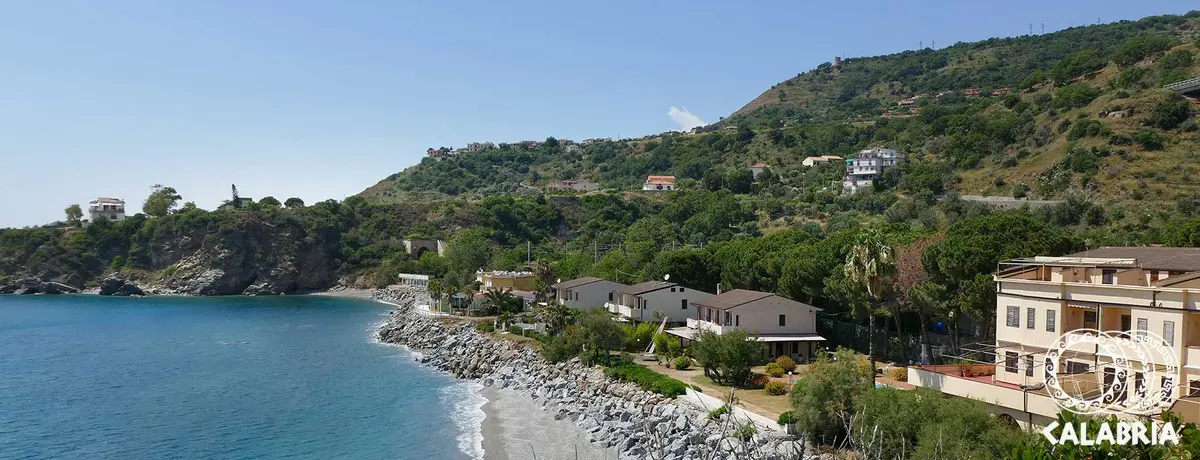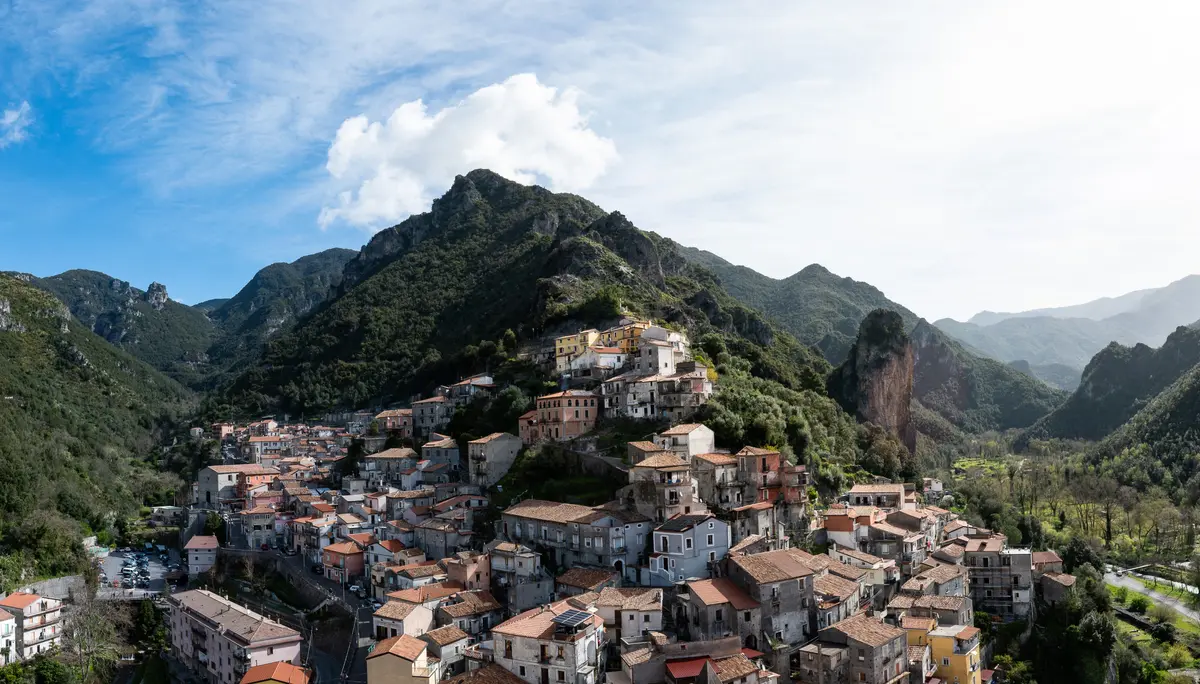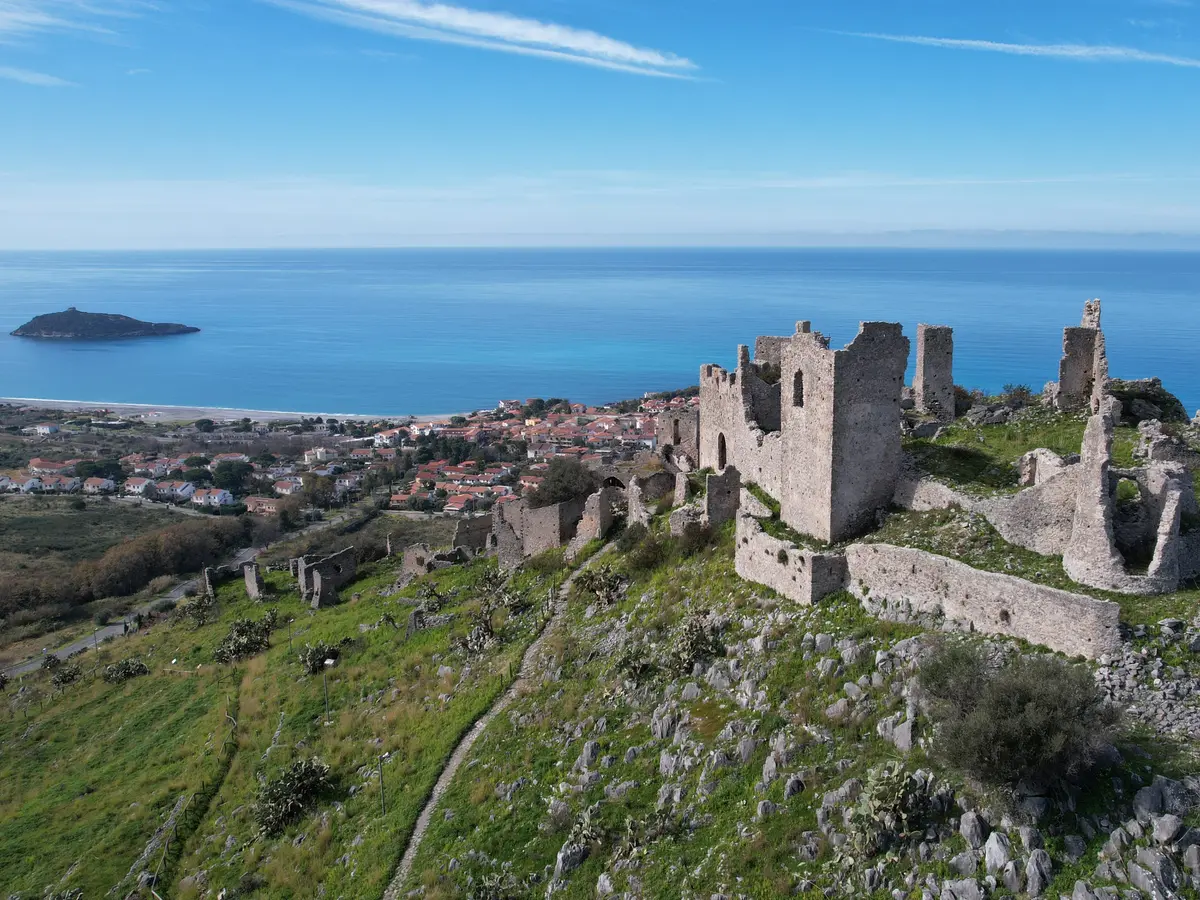Grisolia
Grisolia, the village where houses embrace

Sea
Grisolia lies in a peculiar geographic position: it is perched on a rocky hilltop with the backdrop of the Carpinoso and Cozzo Pellegrino mountains, and separated from the nearby Maierà by a deep valley, where the Vaccuta stream flows embedded between natural stone river banks. A well-known seaside resort on the Riviera dei Cedri (Citrus Coast), Grisolia and its area stretches out until the slopes of the Parco Nazionale del Pollino, boasting many varied landscapes ranging from beautiful beaches along the coast to the rugged mountain ranges that provide the perfect excuse for exploring nature.
In the town of Monte visitors can discover the Castagno del Salavrone (Chestnut tree of Salavrone), that for some experts is Europe’s oldest chestnut tree; it is so big that the arms of ten men are not enough to hug its trunk.
The heart of Grisolia is a maze of alleys, stairs, arches and supports, where its countless alleys all differ from each other in terms of width and length.
The old part of the town is worth a visit due to the historical-artistic beauty of its main streets and alleys, with the typical houses which lean on each other with a distinctly medieval feel. In fact, the heart of Grisolia is a maze of alleys, stairs, arches and supports, where its countless alleys all differ from each other in terms of width and length. An architectural feature of the historic town centre are the supports, in dialect lo spuortu, which are covered areas where houses are attached to one another due to construction requirements and aesthetics. Noteworthy among these unusual architectural solutions, are without doubt u spuortu du mulinu , that during the time of the city states was one of the entrance gates, if not the city's main entrance gate; u spuortu di Via Sotto beneath the walls; u spuortu Via Cafallaro and u spuortu di Via Church, which leads to the Santuario di S. Rocco (Shrine of S. Rocco). Clay tiles in dialect known as ceramili are popularly used to cover roofs and this trend is so widespread as to be able to consider it recurrent with regard to local construction. Elegant antique buildings still retain some recurring decorative elements, which are also found in unique ways in portals, balconies, and windows while lintels often feature the initials of the owner or the family coat of arms. Some archaeological remains found in the cave of San Michele in the town of Serra, represented by fragments of vases for storing foodstuffs and a boulder of squared stone with indecipherable engravings, which can be dated back to in between the Eneolithic Period and the second Iron Age, have led to locate within this area the first traces of civilisation. The presence of the ruins of the monastery of San Nicola and caves with petroglyphs also may bear witness to an appropriation by the Basilian monks. It is believed that the grotta di San Michele (Cave of St. Michael) may have been used by ascetics who travelled the nearby Via Istmica that joined the Tyrrhenian Sea to the Ionian Sea.
Historical town centre
The chiesa di S. Rocco da Montpellier (church of S. Rocco from Montpellier), today a Shrine, and dedicated to the Madonna delle Grazie (Lady of Grace) can be found in the town’s upper part. The Shrine is located in the highest part of the historical town centre and dates back to the year one thousand. The building has a Latin cross floor-plan and preserves many sacred furnishings, of which two are of remarkable historical and artistic importance: the Baptistery in carved wood with baroque elements, which dates back to 1710, and a Byzantine-style silver foil cross and which is approximately from the 1300-1400s and was recently restored. The construction is in stone and at the back there is a crypt which can be accessed both from the inside and outside. The Palazzo Ducale, once the home of feudal lords, has undergone several renovation works but maintains the extraordinary hanging garden from which visitors can admire the deep valley dug by the Vaccuta stream, in front of the enchanting and neighbouring village of Maierà. The building's purpose was merely that of a fortress and its guard tower overlooks the whole Tyrrhenian coast, as well as the basement structure that reveals its antique nature as a sighting and defence point. The Chiesa di Sant'Antonio di Padova (Church of Saint Anthony of Padua), built during the XIV century probably by Capuchin Friars, was built with the characteristic “Pietra di Grisolia” (Grisolia stone); specific local stone material with an unmistakable gold pattern. The construction is isolated from the other buildings as it was built outside the village walls. Over the centuries it has undergone several restorations but maintains the ancient entrance gate which features a wide lunette decorated with the image of Sant'Antonio (Saint Anthony), Grisolia's Patron Saint. The historical town centre has a permanent exhibition Tracce del Tempo (Traces of Time), which contains many finds of the Bronze and Iron Age as well as fragments of bricks from Roman villas and rural life tools.
Grisolia Marina
Grisolia Marina is a part of the stretch of Calabria's coast known as the Riviera dei Cedri (Citrus Coast), that goes from Praia a Mare up to Amantea. The coastline is characterised by a long beach of fine grey sand that alternates with stretches of sea cliffs. During the summer period, Grisolia marina is very popular and offers numerous facilities in terms of options for eating out and accommodation.
Useful information
What to know about Grisolia
Where to Sleep
There are 20 available accommodations.
Places
There are 1 places to visit.
Infopoint Grisolia
Grisolia
No result









